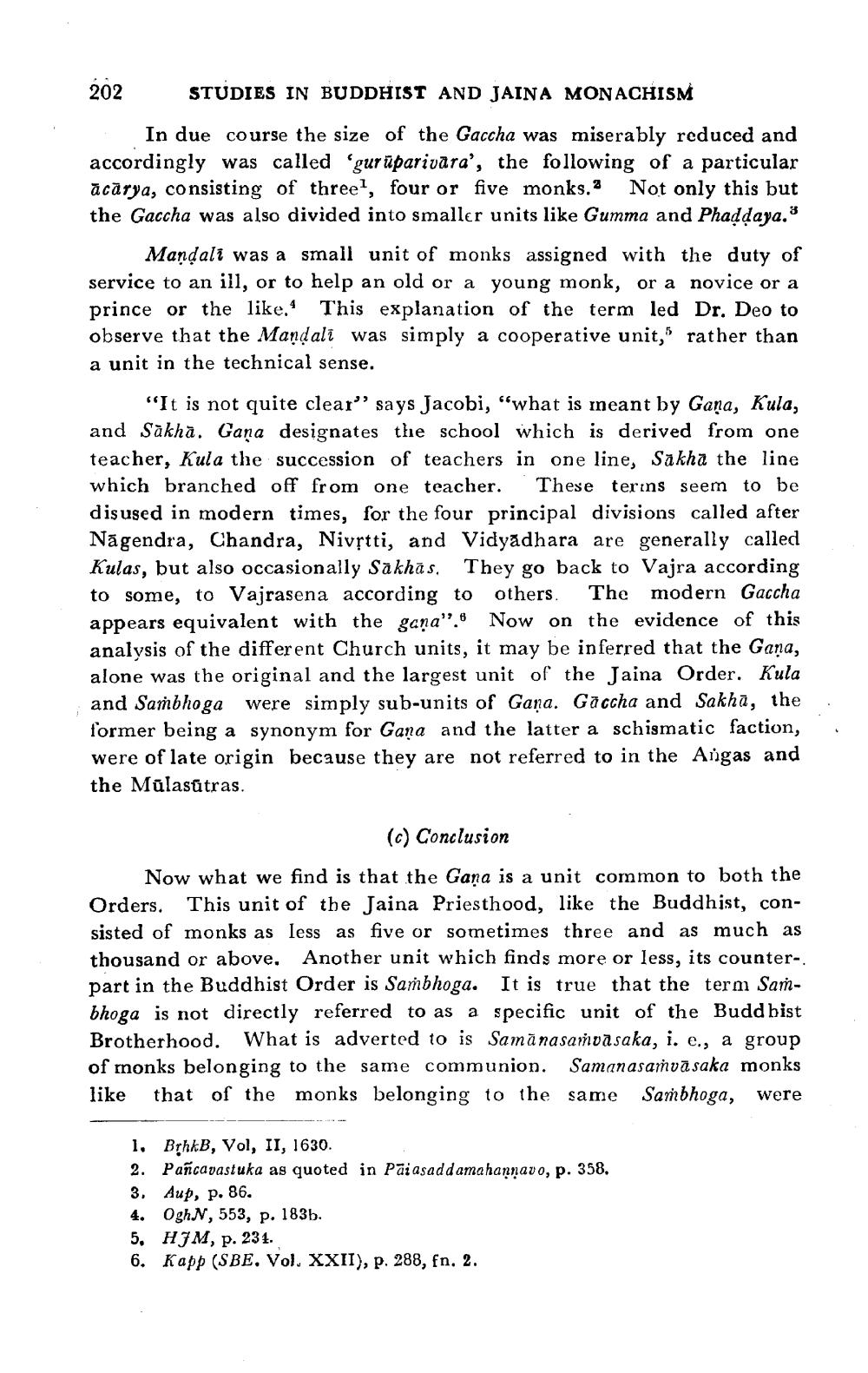________________
202
STUDIES IN BUDDHIST AND JAINA MONACHISM
In due course the size of the Gaccha was miserably reduced and accordingly was called 'gur uparivara', the following of a particular ācārya, consisting of three?, four or five monks. Not only this but the Gaccha was also divided into smaller units like Gumma and Phaddaya.*
Mandali was a small unit of monks assigned with the duty of service to an ill, or to help an old or a young monk, or a novice or a prince or the like. This explanation of the term led Dr. Deo to observe that the Mandali was simply a cooperative unit, rather than a unit in the technical sense.
"It is not quite clear” says Jacobi, "what is ineant by Gana, Kula, and Sakha. Gana designates the school which is derived from one teacher, Kula the succession of teachers in one line, Sakha the line which branched off from one teacher. These terins seem to be disused in modern times, for the four principal divisions called after Nagendra, Chandra, Nivștti, and Vidyadhara are generally called Kulas, but also occasionally Sakhās. They go back to Vajra according to some, to Vajrasena according to others. The modern Gaccha appears equivalent with the gaņa”. Now on the evidence of this analysis of the different Church units, it may be inferred that the Gana, alone was the original and the largest unit of the Jaina Order. Kula and Sambhoga were simply sub-units of Gaņa. Gaccha and Sakha, the former being a synonym for Gana and the latter a schismatic faction, were of late origin because they are not referred to in the Angas and the Mūlasútras.
(c) Conclusion
Now what we find is that the Gana is a unit common to both the Orders. This unit of the Jaina Priesthood, like the Buddhist, consisted of monks as less as five or sometimes three and as much as thousand or above. Another unit which finds more or less, its counterpart in the Buddhist Order is Sambhoga. It is true that the term Sambhoga is not directly referred to as a specific unit of the Buddhist Brotherhood. What is adverted to is Samănasamvāsaka, i. e., a group of monks belonging to the same communion. Samanasaṁvā saka monks like that of the monks belonging to the same Sambhoga, were
1. BrhkB, Vol. II, 1630. 2. Pañcavastuka as quoted in Pāiasaddamahannavo, p. 358. 3. Aup, p. 86. 4. OghN, 553, p. 183b. 5. HJM, p. 234. 6. Kapp (SBE. Vol. XXII), p. 288, fn. 2.




